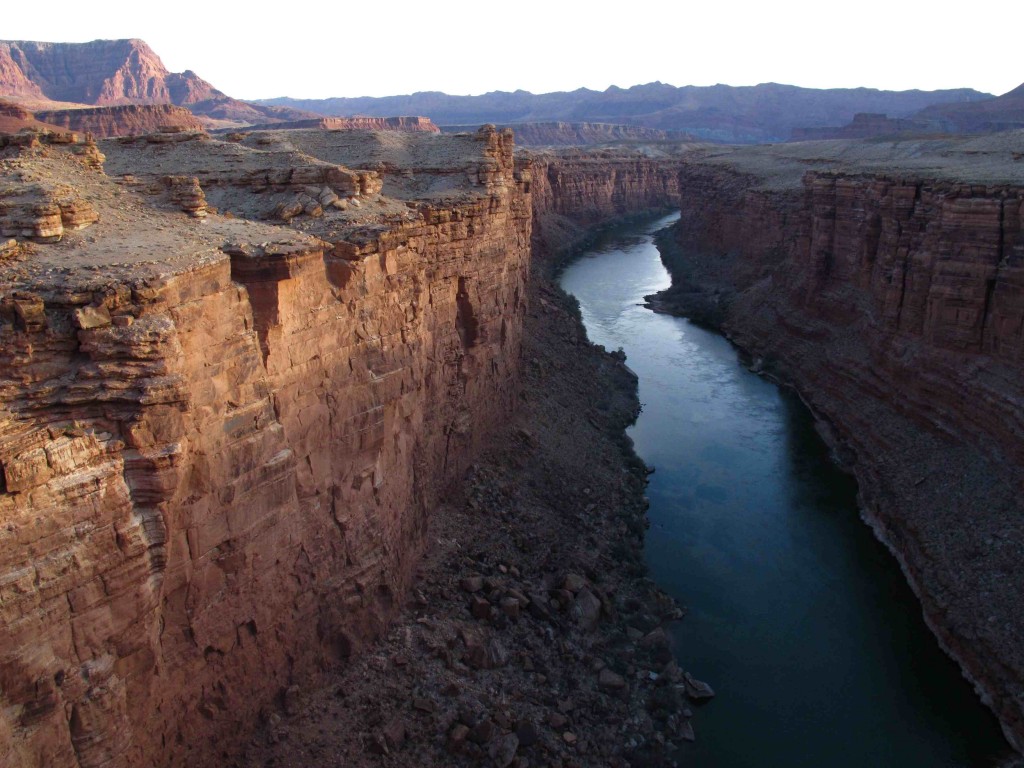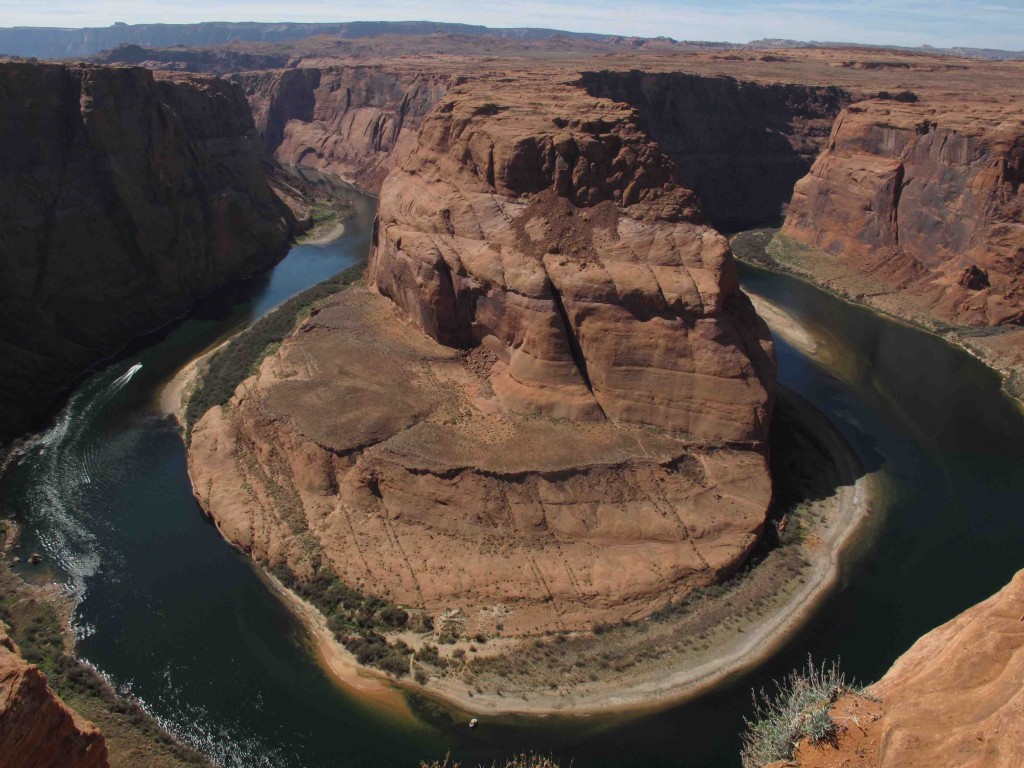April in Arizona: canyons, cacti and Mom
I know it has been a while since I updated the blog. I’m not sure where to begin. Arizona, I guess. That’s where I’ve been for most of the time since I last posted something and got, for better and worse, frequently detoured.
I’ve been fortunate, not only to see some amazing places, but to have some fascinating people show them to me. I’ve hung out with dozens of river guides in a remote warehouse near Marble Canyon; helped count and measure cacti in Saguaro NP as part of one of the park service’s longest-running vegetation studies; hiked to the top of the tallest mountain in Saguaro West with family and friends of a Gabrielle Giffords aide who was killed in the Tucson shootings; spent time at the Flagstaff art studio of a painter who lived and worked at the bottom of the Grand Canyon for 33 years; watched the sun set and the stars come out on the South Rim with the park superintendent; hiked down to the Colorado River by myself, meeting someone along the way who just might represent the future of the parks. A 4-year-old boy named “Blue.”
I’ll tell you about all of them later. But I probably should begin before all that, with the first day in the Arizona trip. With sitting in a rental car in the parking lot at the visitors center next to the Glen Canyon dam, looking at the red rock and too blue water of Lake Powell, trying to digest everything. The dam, the past, the present and, most of all, the phone conversation I was having at that moment with my mom in Tucson.
I had spent the day exploring the area near the start of the Grand Canyon. I went to Lees Ferry, the place where most of the canyon rafting trips began. I hadn’t been there since the late 1990s. After my dad died, my mom decided the rest of the family should get together the next spring and raft through the Grand Canyon. And when the guides asked if anyone wanted to ride “cowboy” through a rapids — sitting on the front of the boat, like a cowboy riding a bucking bronco — Mom had raised her hand.
When she got bucked off and ended up in the river, she did what the guides tell you to do. Put your feet first. Ride through the rapids to the pool below. Try to stay calm.
At the bottom of the rapids, a guide plucked her out of the water. I was in another boat and missed all of this, which probably was for the best. I probably would not have remained calm. Or maybe I would have. The canyon is calming, even when it’s exhilarating.
There are a handful of trips in my life that remain deeply ingrained, the memories popping up every so often and, in different ways, continuing to affect me, remind me what is important. New Orleans after Katrina. Haiti after the earthquake. The Redwoods as a child. The Grand Canyon as an adult.
Here’s how just a little bit of time deep inside the Grand Canyon affected me: It made me feel ridiculously small, not just literally but figuratively. It hammered home the reality that our time on this earth is very short. And this felt not only humbling, but liberating and surprisingly comforting.
So when I won the fellowship, built around the idea of the future of the parks, I was determined to find a way to include the Grand Canyon. I settled on water — with the Colorado symbolizing the issue of water in the future.
I went to Northern Arizona to spend a weekend with some river guides. With some time to kill beforehand, I went to the dam. It seemed like a natural starting point for thinking about the past, present and future of the river. I stood on the nearby bridge and listened to the hum of the dam. I took the tour. Then I called my sister’s phone to see how my mom’s latest round of chemo went. She said I better talk to Mom.
My mom got on the phone and explained they had made a decision. The chemo wasn’t working. The doctors had told her as much when she was diagnosed with cholangiocarcinoma in February, basically saying the tumor was so large and in such a bad place that she had little hope of getting rid of it. But she wanted to give chemo a try. The treatment and all the accompanying drugs were quickly tearing apart her body and her mind. They were doing more harm than good. So, she said, they had decided to end the treatments and begin hospice care.
She said she wanted to be home, with her dog, looking at the desert. Not stuck in some hospital room.
I told my mom I really was not ready to lose her. But that I also really didn’t want to see her suffer just for the sake of suffering.
When I got off the phone, I headed south, for the start of the river guides gathering. On my way there, I passed Horseshoe Bend, an iconic overlook of what remains of Glen Canyon in the 15 miles below the dam. This is one of those places you’ve probably seen many photos of. But only a small percentage of the 5 million annual visitors to the canyon ever make it this far north. I never had. So I pulled over, sitting in a parking lot before eventually taking a deep breath and getting out of the car.
As I made the short hike, over a hill and to the stunning view at the rim, I was acutely aware of the families I passed. There was one in particular, two parents and a young girl about Mia’s age, walking with a woman whom I’m guessing was grandma. I wanted to tell them to appreciate it. Not just the canyon and the river. The moment.
And then I headed back to the rental car, back to whatever this year will bring, determined to follow my own advice.
Leave a reply
Fields marked with * are required






1 Comment
06 May 12 at 1:40pm
1
Loved the description of how standing at the Grand Canyon made you feel. It connected with how you must have felt sitting in the rental car of the parking lot, taking a long breath after the conversation with your loved one......not in control, humble, awestruck by the beauty of existence.